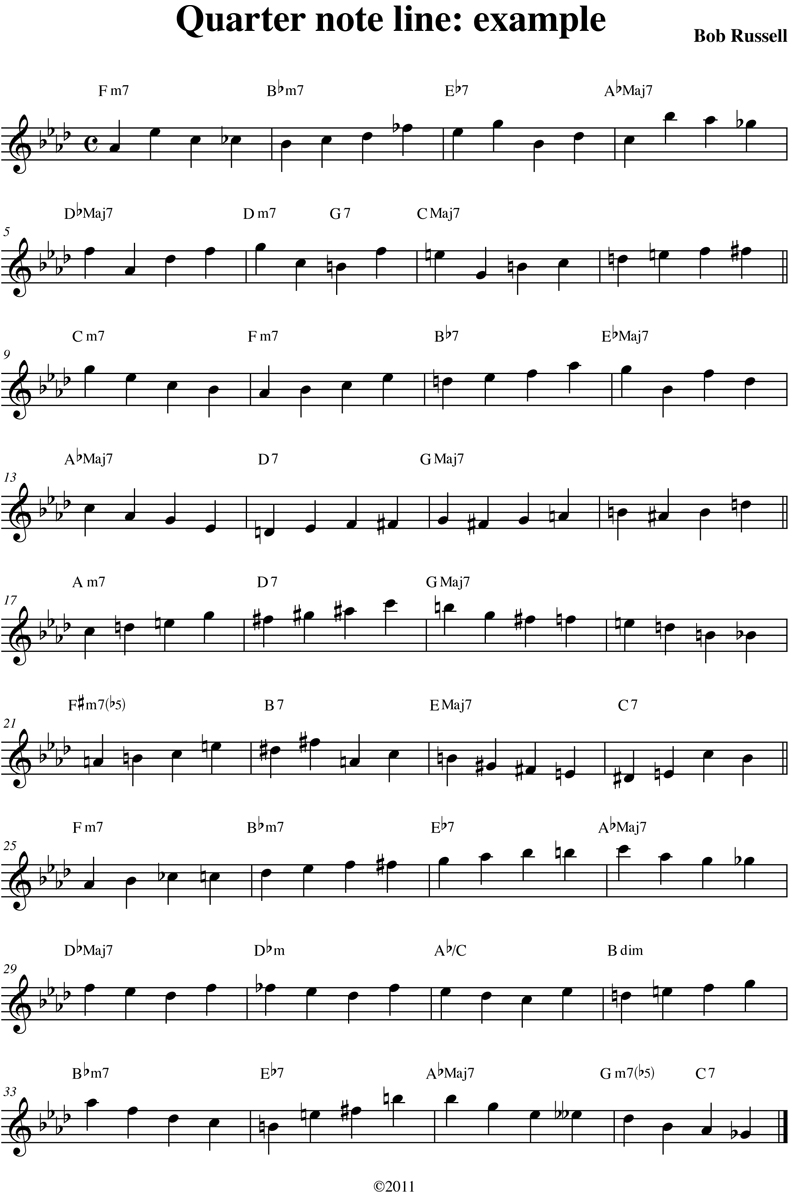The Quarter-note Donkey Exercise
A
good preparatory exercise for learning to navigate chord changes is to
practice making up quarter-note lines through the changes. “Walking
lines”, if you will. Of course, this is routinely expected of bass
players in jazz. But as a guitarist, you may never have thought much
about how bass players come up with these lines. If you’ve never tried
it, you may even be thinking, “Quarter notes... how hard could that
be?” But there are some specific characteristics of a good-sounding
walking bass line. The placement of each note in the measure matters a
great deal. If we study this, we could come away with some new
understandings about how to connect chord tones. We could, at the very
least, come away with renewed appreciation for bass players! So let’s
begin...
For
bass players, a typical practice is to put the root of the chord on the
first beat. They also usually prefer to connect chords by stepwise
motion rather than large skips. They tend to put chord tones on beats
one and three when playing traditional walking lines in 4/4 time.
Since
we’re not bass players, I’d suggest that we not worry so much about
putting the root on the downbeat; other chord tones would be okay. We
can also be freer about using extensions and alterations as chord
tones. (Not to say that modern bass players don’t do that anyway.)
What
follows next is a sample chorus I did on “All the Things You Are”,
using the guidelines above. I’ve tried to give you a mix of easily
understood diatonic stuff and not-so-predictable chromatic stuff. As I
walked through the progression, I had to keep in mind things like key
centers and appropriate scales for things like dominant chords in ii-V
progressions. But I focused on putting chord tones on beats 1 and 3 and
I moved from chord to chord by step rather than skip. (Occasionally, as
in measure 4, I used the lowered 7th on a major chord, implying a
dominant sounds for a stronger pull to the next chord. Bass players do
that sometimes.) Here’s what happened:


Play this example, then make up some of your own. Next steps to take:
• Break up the quarter note pattern; add rests. Distribute the same notes differently in the time.
• Add connecting eighth notes between some of the quarter notes.
•
Add connecting eighth notes between ALL of the quarter notes for a
continuous eighth note line - you’ll probably have to use a lot of
chromaticism to make this work, and you’ll learn from that.
• Next time you get to play with a good bass player, thank him/her.